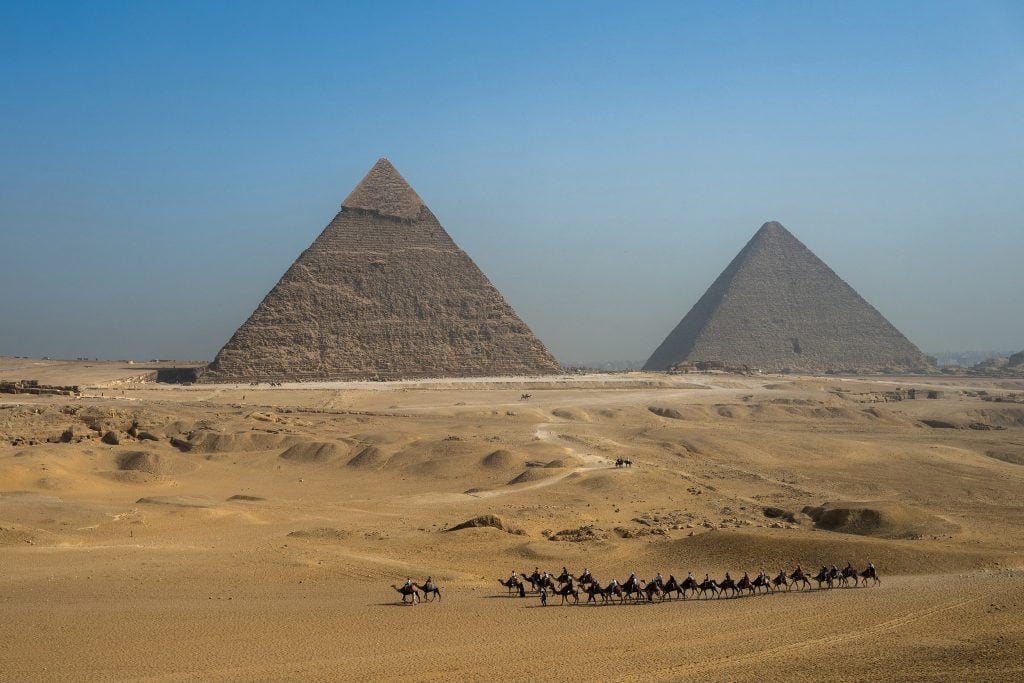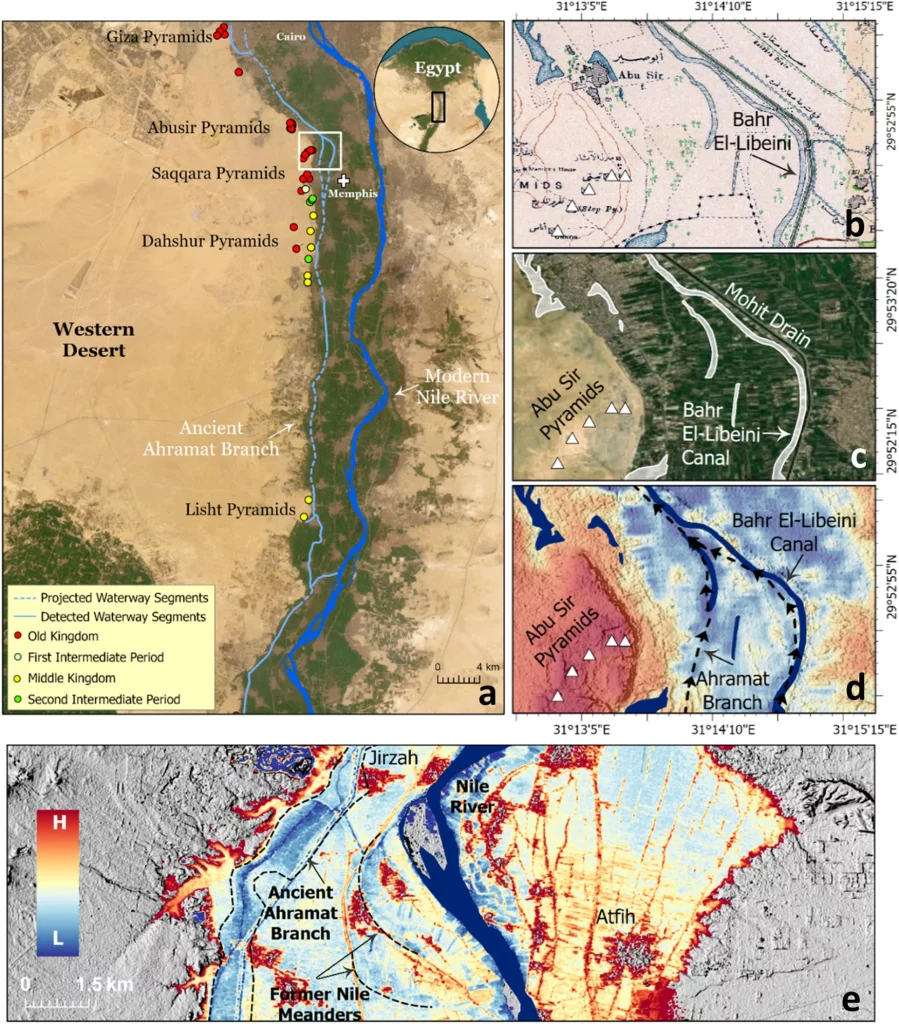Archaeology & History
This Long-Lost Waterway Could Unlock the Mystery of How Egypt’s Pyramids Were Built
The extinct branch of the River Nile could explain the pyramids’ location and how they were built.

New research has led scientists to believe that Egypt’s ancient pyramids were built along a long-lost branch of the River Nile. The team from the University of North Carolina Wilmington has claimed that the discovery of this extinct waterway solves the mystery of how materials were transported to construct the Giza complex and other pyramids that populate the Western Desert Plateau, as well as explaining the high concentration of pyramids in the area.
The so-called Ahramat Branch (named after the Arabic word for pyramid) was approximately 39 miles long and over 2,000 feet wide, but was gradually lost to the desert and farmland. At present, the pyramid sites lie several miles away from the waterside, despite the presence of causeways that would usually terminate at a riverbank.
In a report published in the journal Communications Earth and Environment, the researchers stated: “Many of the pyramids, dating to the Old and Middle Kingdoms, have causeways that lead to the branch and terminate with Valley Temples which may have acted as river harbors along it in the past. We suggest that the Ahramat Branch played a role in the monuments’ construction and that it was simultaneously active and used as a transportation waterway for workmen and building materials to the pyramids’ sites.”

The water course of the ancient Ahramat Branch of the River Nile.
The team used radar satellite imagery, geophysical data, and deep soil coring to investigate the subsurface structure and sediment deposits in the northern Nile Valley, between Lisht and the Giza Plateau. Unlike the arid and inhospitable landscape known today, up to 6,000 years ago, the valley was a network of freshwater marshes and floodplains, with inhabitants moving to natural levees of the river and jeziras (islands) by the beginning of the Old Kingdom period (around 2686 B.C.E.).
According to the report, “Most of the key cities and monuments were in close proximity to the banks of the Nile and its peripheral branches. Over time, however, the main course of the Nile River laterally migrated, and its peripheral branches silted up, leaving behind many ancient Egyptian sites distant from the present-day river course.”
The Ahramat Branch moved steadily eastward, with abandoned channels visible in 1911 historical maps of the area. The Dahshur Lake is probably the last existing trace of the tributary.





